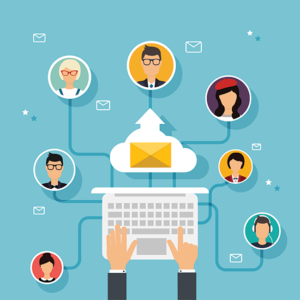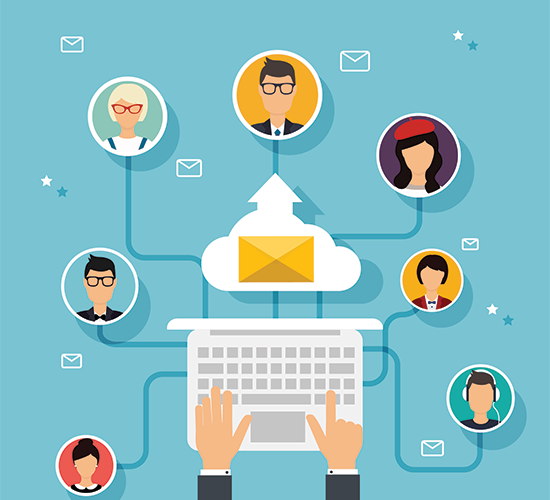
In this first post of our series to support successful B2B marketing in 2022, we take a look at emerging trends and practices in email marketing. Email marketing continues to be one of the most impactful and widely used tactics in B2B marketing toolkit. But with heavy competition for attention in prospect and customer inboxes, it’s important to continue upping your email game or else risk plateaued or declining performance. So, let’s dig deeper into what marketers are doing to get more mileage out of email marketing this year.
Advances in Artificial Intelligence
In recent years, the use of artificial intelligence (AI) in marketing has continued to expand as technology develops and algorithms become more sophisticated. Using AI in your email marketing campaigns can greatly improve your return on investment for a variety of reasons. One of the biggest advantages of AI is that it can optimize on the go by analyzing real-time feedback to continuously tweak your campaign for optimal results.
Google “AI for email marketing” or “AI for content writing” and you’ll see a growing array of tools being applied. AI can help you dramatically improve and streamline both your email writing and delivery process, including:
- Writing subject lines that entice audiences
- Optimizing email send times to deliver at times audiences open most often
- Segmenting email lists, dividing audiences by a number of their characteristics such as job title and industry
- Recording what links readers click
- Sending highly personalized emails
Not sure how to identify whether your email marketing is effective and reaching your target audience? Read our blog on the five email marketing best practices.
More Sophisticated Email Personalization Tactics
In email marketing, email personalization is the act of tailoring individual elements of broad-based emails to individuals by using data and information tied to each recipient. As B2B buyers expect more consumer-like buying experiences, B2B organizations need to prioritize personalization more highly. For example, basic email personalization may involve salutations or subject lines that include a recipient’s name, while more sophisticated personalization may adjust email content more deeply based on location, past purchases, engagement behavior, and more. Enabling more sophisticated personalization tactics may require adjustments in data collection and advanced email marketing applications.
Email personalization helps make broad email campaigns more relevant on a subscriber-by-subscriber basis and can re-engage customers that have interacted with your business in the past.
To build strong marketing foundations going forward into 2022, check out our Big Rocks eBook for strategies and tips to boost success.
Send-Time Optimization
More and more email marketing programs are tracking individual engagement patterns, using that data to provide all sorts of helpful information — including the ideal time to send out emails that support a marketing campaign.
Using send-time optimization can help take the guesswork out of when the best time to send out email campaigns is. Since databases constantly change and open times vary from person-to-person, there’s no one-size-fits-all way to optimize a send time for your entire send list. Send time optimization is a tool that will only grow in popularity in 2022. So far, companies like Seventh Sense and MailChimp are partnering with major marketing software products to make the transition to automated optimization seamless for clients.
For more tips on how to optimize email marketing, check out our blog post “How to Create Effective Email Marketing Campaigns.”
Email Copy: Less is More
Since the onset of COVID-19, marketers have increasingly focused marketing efforts on the digital world. Because of this, content marketing has become more oversaturated than ever before. To keep viewers engaged, focus on writing short, concise emails instead of overwhelming them with long-form content.
When writing emails, home in on the main value points to keep viewers engaged. Make sure your emails do not exceed more than a few paragraphs. This makes your content skimmable and easy for viewers to digest quickly. People check their email during quick breaks and while they’re on-the-go, so the likelihood of viewers spending more than a few seconds reading a non-personal email is small. Clear design and messaging will increase your chances of engagement.
As always, the goal of marketing efforts is engagement and growth. Plan and execute your 2022 B2B email marketing campaigns with these goals and be mindful of the tools and trends that your organization can use to maximize your marketing efforts.
Need help with your email marketing strategy? As an Austin-based B2B marketing tech firm, Launch helps teams create and execute email marketing strategies that get results. Contact Launch today or request a free marketing consultation.
Source link



